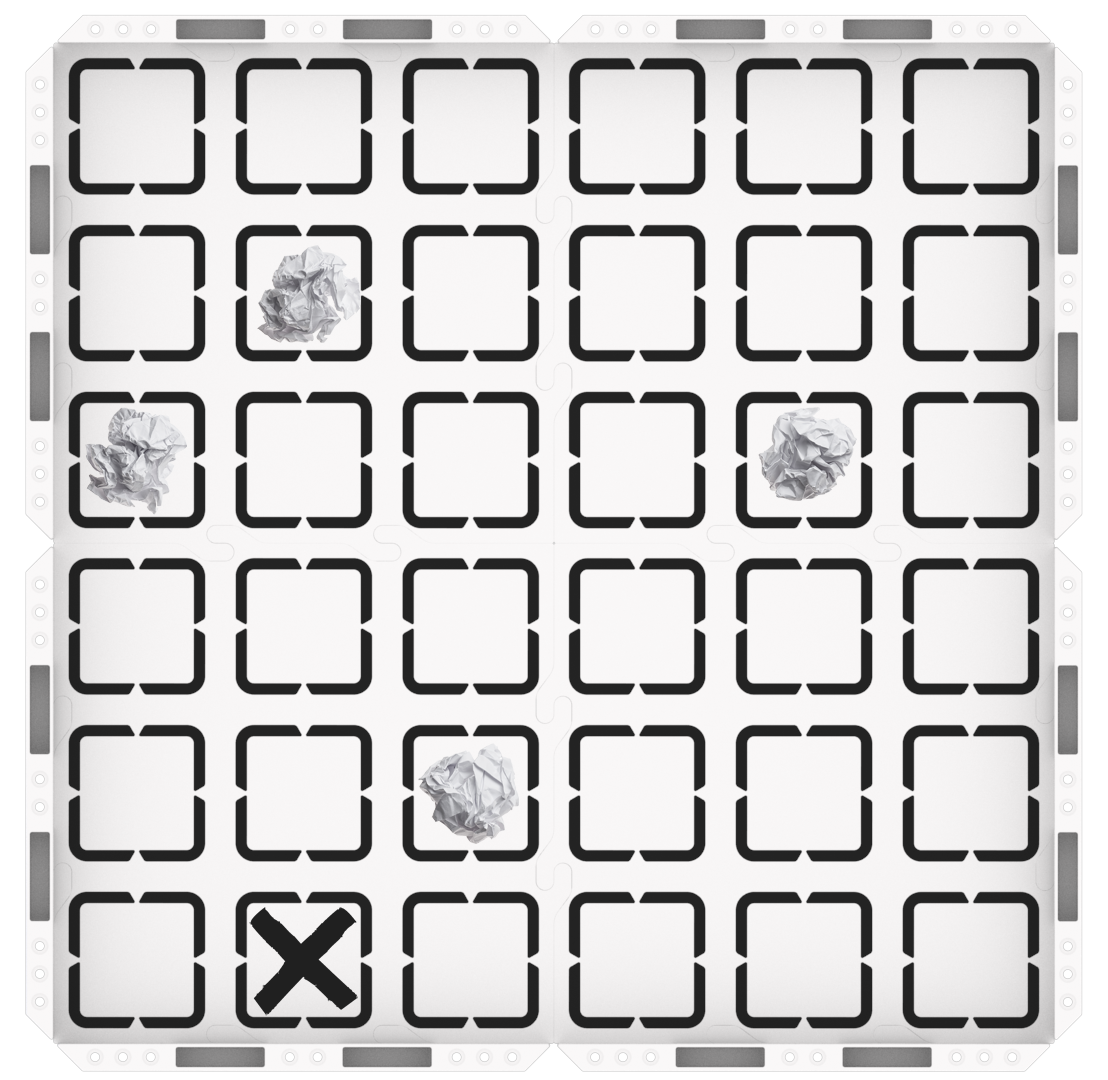Summary
Materials Needed
The following is a list of all the materials and teaching resources that are needed to complete the VEX 123 Lab. First listed are the materials needed for the entire Lab, including the 123 Robot. In certain Labs, links to teaching resources in a slideshow format have been included. Not all Labs will include a slideshow. These slides can help provide context and inspiration for your students. All slides are editable, and can be projected for students or used as a teacher resource.
| Materials | Purpose | Recommendation |
|---|---|---|
|
123 Robot |
To act as the Mars Rover and carry out projects. |
1 per group |
|
123 Field |
To use as a Mars landing area and as a testing surface for projects. |
1 Field per 2 groups |
|
Tablet or Computer |
To access VEXcode 123. |
1 per group |
|
VEXcode 123 |
To build projects for the 123 Robot. |
1 per group |
|
For visual aids while teaching. |
1 for the class to view | |
|
White scrap paper |
To ball up and use as obstacles on the 123 Field. |
3 - 4 pieces per Field |
|
Dry erase marker |
To mark the start and obstacle locations on the 123 Field. |
1 for the class to use |
Environment Setup
- Think about how your students will access VEXcode 123. Ensure that the computers or tablets that students will use have access to VEXcode 123. For more information about setting up VEXcode 123, see this VEX Library article.
- Gather the materials each group needs before class. For this Lab, each group of two students will need a 123 Robot, a computer or tablet to access VEXcode 123, sheets of scrap paper to create obstacles (3-4 per Field), and access to a 123 Field for testing.
-
Set up your 123 Fields ahead of time, as shown in the image below, to serve as a testing space for the 123 Robots. Mark the start, using a dry erase marker. Add obstacles to the Field as shown in the example below, or to best meet the needs of your students. Crumple pieces of white scrap paper to create basic obstacles.

123 Field Setup - Have the Fields spread out around the classroom to allow students ample space to test their projects.
-
- Review the Facilitation Strategies in the Engage section for turn-taking ideas to help students share responsibilities during the Lab. For groups larger than the recommended two students, provide students with more granular roles. Examples of responsibilities for students in this Lab include:
- Turning on the 123 Robot and connecting it to the computer or tablet.
- Placing the 123 Robot on the Field in the starting location, and starting the project.
- Resetting the obstacles on the Field after testing.
- Building the project in VEXcode 123 in Play Part 1.
- Editing the project in VEXcode 123 in Play Part 1.
- Building the project in VEXcode 123 in Play Part 2.
-
Editing the project in VEXcode 123 in Play Part 2.
Engage
Begin the lab by engaging with the students.
-
Hook
In Lab 1, the 123 Robot drove and detected one obstacle on the landing site so the Mars rover can land safely. What if there were multiple obstacles on the landing site?
-
Demonstrate
Students will wake their 123 Robots, connect them to VEXcode 123 and get ready for the Play activity.
-
Leading Question
How can you use a loop in your projects to detect multiple obstacles on the landing site?
Play
Allow students to explore the concepts introduced.
Part 1
Students will be challenged to create a project where the 123 Robot drives around the entire landing site and detects all of the obstacles the Mars rover might encounter during landing. They will use the project from Lab 1 as a starting point to help solve the challenge. This Lab is an open-ended exploration that will ask your students to use what they have learned previously to solve the challenge.
Mid-Play Break
This will be a chance to check in on students' progress and troubleshoot. Students will show their projects and describe what the 123 Robot is doing. Is it driving to and detecting all the obstacles on the landing area (VEX 123 Field)? Do they think their project will work if the location of the obstacles is changed? Why or why not?
Part 2
The location of the obstacles has changed on the landing site! Students will be challenged to edit their project so that the 123 Robot drives to all of the obstacles on the landing site when the locations have changed.
Alternate Coding Methods
While this Lab is written for use with VEXcode 123, it can also be completed using the Coder. Instead of giving each group a tablet or computer, distribute a Coder and Coder cards for students to build the projects to drive and detect objects repeatedly. For more information about the Coder, see the Using the VEX Coder VEX Library article.
Share
Allow students to discuss and display their learning.
Active Share
Have students share their projects with one another. They can compare and contrast how projects differ between groups.

Discussion Prompts
- How would you describe what the loop does in your project?
- What was one challenge your group faced while creating and testing your VEXcode 123 project? How did you deal with that?